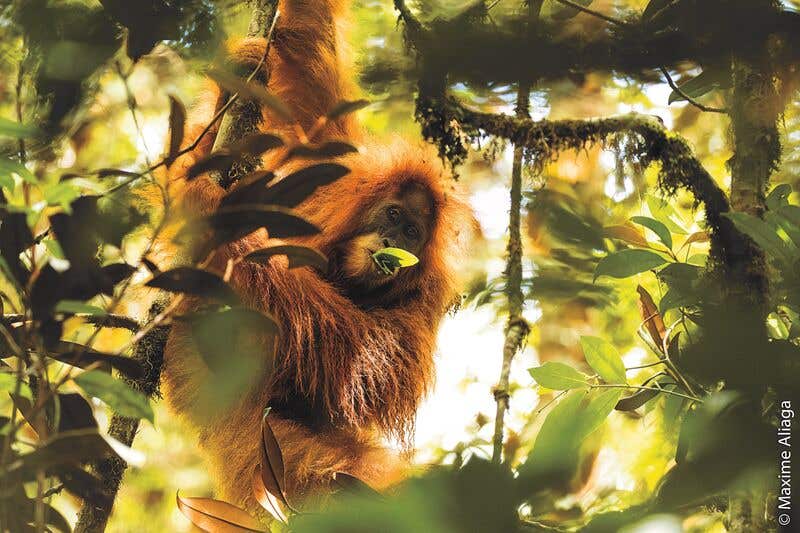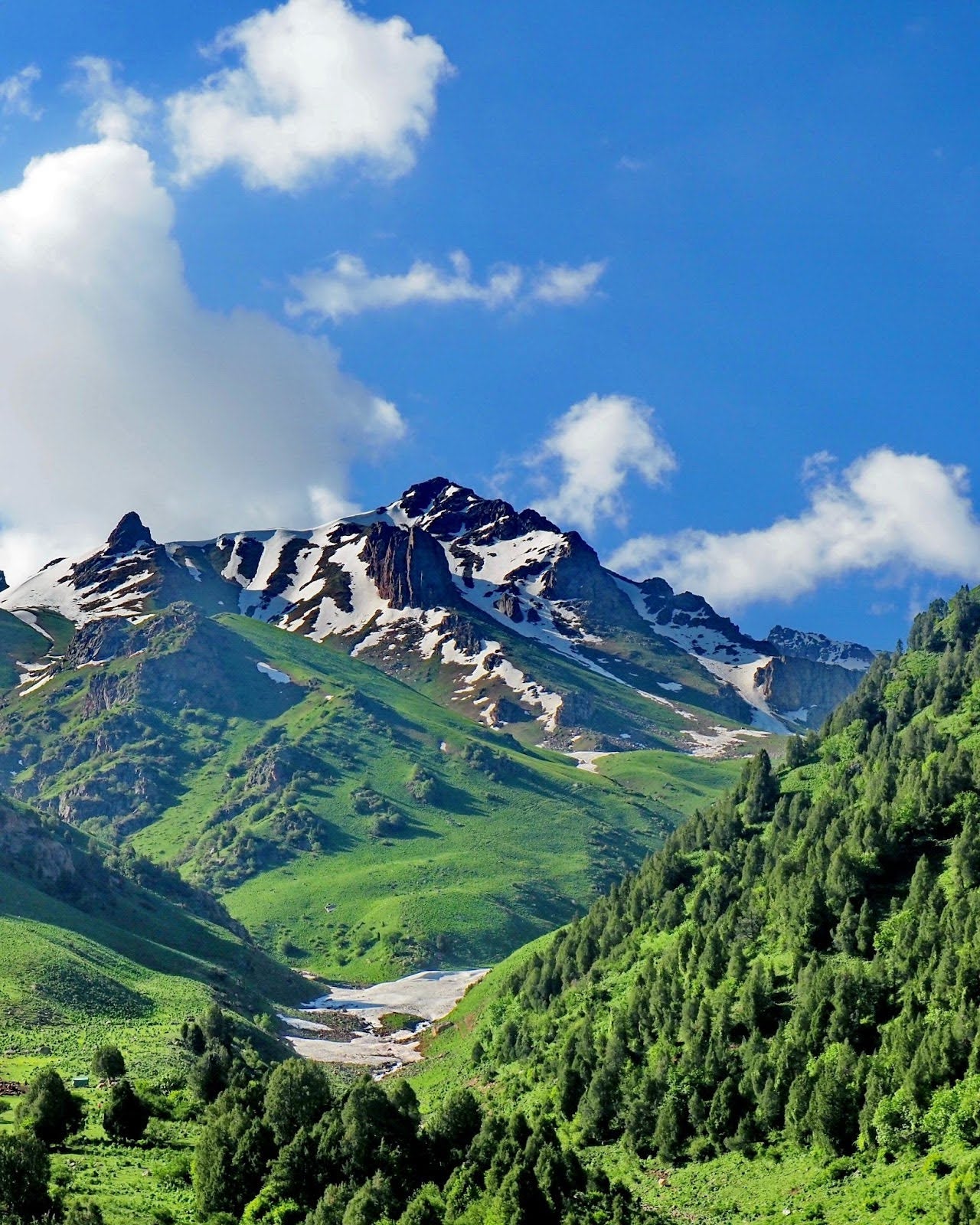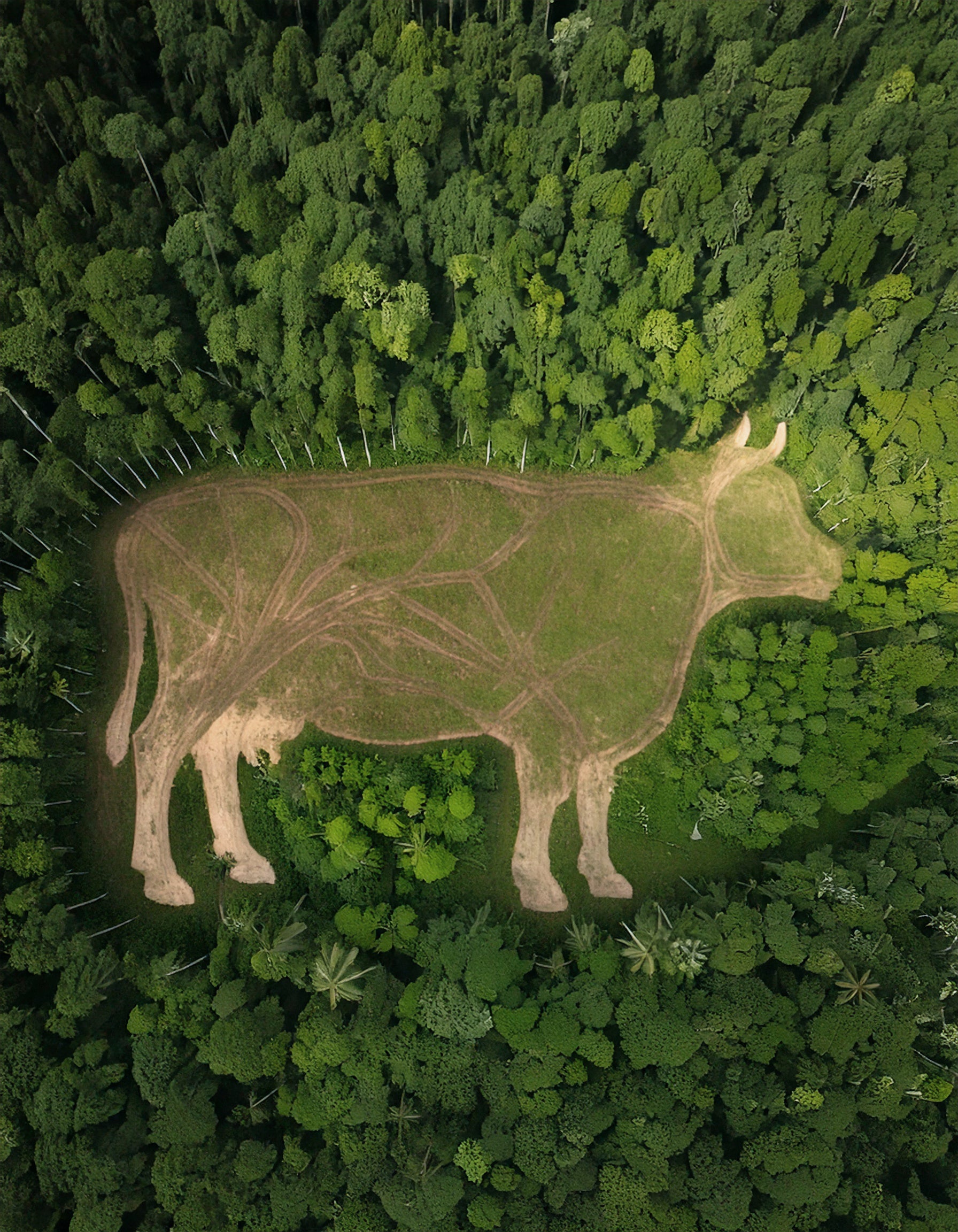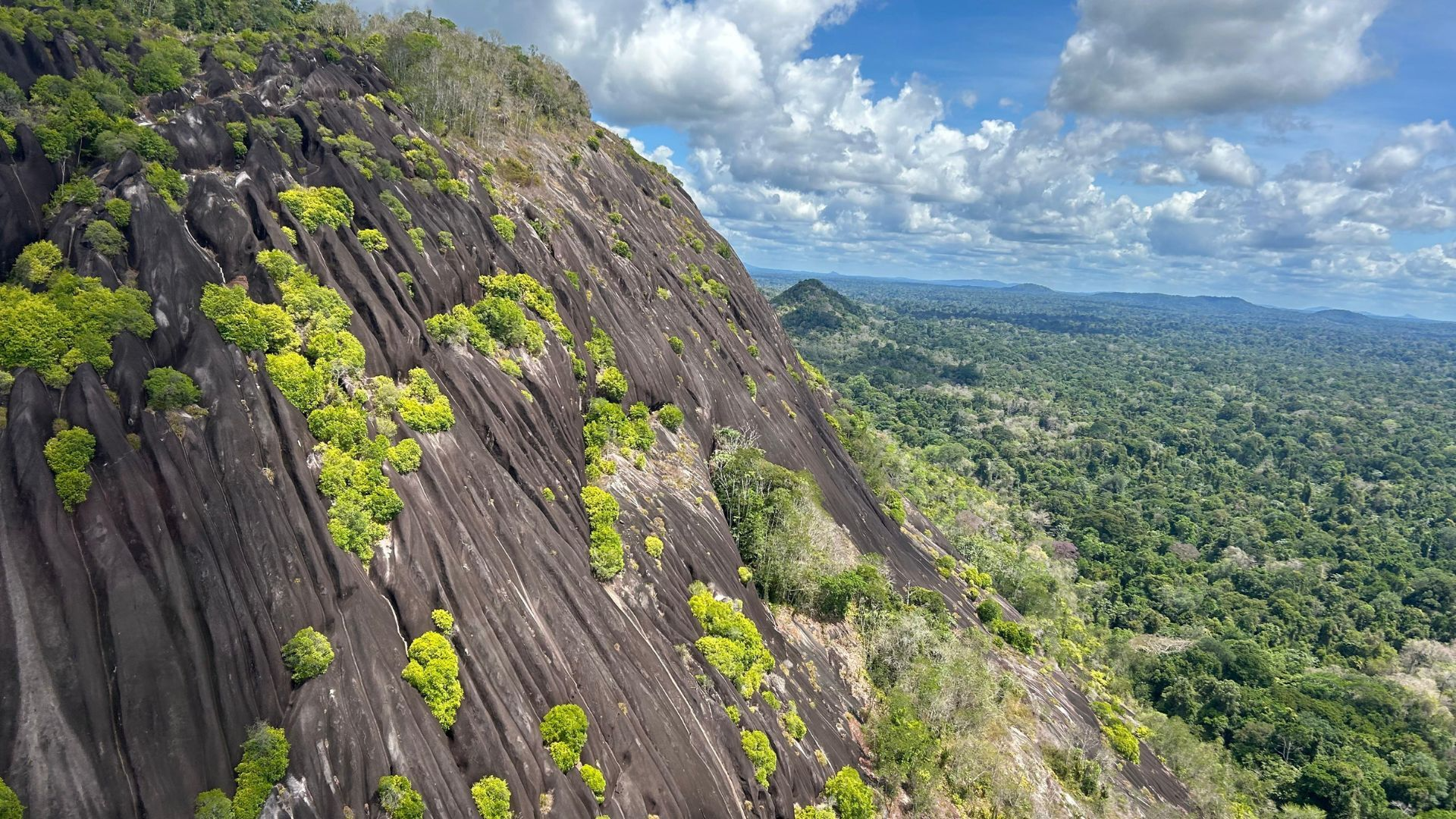Biennial ‘Primates in Peril’ Report Spurs Critical Support for Conserving Most Imperiled Species Globally
 © Maxime Aliaga
© Maxime Aliaga
For Immediate Release
October 7, 2019
Just two years after the historic identification in Indonesia of the Tapanuli orangutan— the first great ape described since the bonobo from the Democratic Republic of the Congo in 1929—the orangutan has officially joined the list of the world’s most imperiled primates, published in the ‘Primates in Peril: The World’s 25 Most Endangered Primates, 2018-2020’ report released the evening of Oct. 7. The main threat to the species is an ongoing hydroelectric dam project, which the IUCN SSC Primate Specialist Group Section on Great Apes has asked to be put on hold, as well as ongoing forest conversion and human-orangutan interactions that have led to orangutans being killed and wounded. With fewer than 800 individuals left in the wild, the species is in need of swift conservation action to prevent its extinction.
“The inclusion of the critically endangered Tapanuli orangutan on the official list of the world’s most endangered primates is not surprising given the existing threats to its small population, but this underscores a tremendous opportunity,” said Dirck Byler, Global Wildlife Conservation’s great ape conservation director and vice chair for the IUCN SSC’s Primate Specialist Group’s Section on Great Apes. “As the home of the Tapanuli orangutan and two other orangutan species, Indonesia has the chance now to become a leader in great ape conservation by implementing the kinds of measures that will not only protect this special animal and its habitat, but that has the potential to positively impact local economies and livelihoods through ecotourism. That’s what this report is really about—ensuring that we are identifying those primate species in most need of help and engaging the lawmakers, conservationists, indigenous people and community members who can help change the course of history for them.”
The biennial ‘Primates in Peril’ report, which is a collaborative effort of the IUCN SSC Primate Specialist Group, the International Primatological Society, Global Wildlife Conservation and the Bristol Zoological Society, outlines the 25 most endangered primates based on the passionate nominations of primate champions from four regions of the world: Africa, Madagascar, Asia and the Neotropics. Primates include not only monkeys and apes, but also lemurs, lorises, galagos, and tarsiers.
Two of the species in the 2018-2020 report—the Tana River red colobus in Kenya and the Niger Delta red colobus in Nigeria—are among GWC’s priority species and belong to one of the most threatened group of primates in Africa, the red colobus monkeys.
“The Tana River red colobus and the Niger Delta red colobus are just two species, but the threats that they face—primarily habitat destruction and poaching—are the same threats that could really land any of the red colobus monkeys onto the list of the world’s most imperiled primates,” said Aghomo Florence, red colobus conservation coordinator for the IUCN SSC Primate Specialist Group and African Primatological Society. “Our goal is to try to prevent red colobus species from showing up on this list in the future by working with a range-wide network of dedicated local actors to help the species rebound in the wild.”
In 2018, GWC, the African Primatological Society and the IUCN SSC Primate Specialist Group launched the continent-wide Red Colobus Action Plan to identify priority actions and sites across 20 countries to set up effective wildlife conservation programs; support a new generation of local African conservation leadership around red colobus; develop initiatives to link and support site-based action; and establish standardized monitoring tools.
GWC’s specific efforts to recover the Tana River red colobus and protect the Niger Delta red colobus fall under this initiative. GWC works with local partners on establishing and enhancing community conservancies, implementing community-based protection measures to prevent hunting, and developing monitoring programs with local and indigenous communities for these species.
With 43 percent of the world’s primates classified as critically endangered or endangered by the IUCN Red List of Threatened Species, the primates listed in the ‘Primates in Peril’ report represent those most in need of conservation action and most likely to benefit from the publicity that results from the release of the report. In the case of the northern muriqui monkey and purple-faced langur, for example, inclusion in the report historically helped spur and unlock support for conservation action.
“At GWC and the IUCN SSC, we don’t just compile this list and then sit around waiting for these species to vanish before our eyes,” said Russ Mittermeier, Global Wildlife Conservation’s Chief Conservation Officer and chair of the IUCN SSC Primate Specialist Group. “‘Primates in Peril’ is a powerful call to action that has helped raise awareness about the plight of primates generally and those most endangered specifically, helping conservationists prioritize their efforts and develop effective partnerships with governments and local NGOs and communities.”
Twelve of the species in the 2018-2020 report were not in the previous report, with eight of those appearing on the list for the first time and four of them reinstated after they were previously removed. The list includes seven species from Africa, five from Madagascar, seven from Asia and six from the Neotropics.
“This report reveals the bleak prospects of some of the world’s most incredible animals. Despite this, I still have hope that this is not too late,” said Christoph Schwitzer, chief zoological officer at Bristol Zoological Society and IUCN Red List Authority coordinator for the SSC Primate Specialist Group. “There is an unprecedented level of interest in world environmental issues, particularly among the younger generation, many of whom are more inspired, passionate and motivated than ever before to do their part to help make a difference. It is this kind of support, combined with effective conservation action, which is vital if we are to avoid losing these wonderful and charismatic animals forever.”
Other species of note in the 2018-2020 report include the Skywalker hoolock gibbon from China and Myanmar, which was described only in 2017 and is new to the list; the western chimpanzee from a number of West African countries, whose population could drop dramatically if the current rate of population decline continues; and the golden-headed langur from Vietnam, which numbers a mere 50-60 individuals. The golden-headed langur has been included on every ‘Primates in Peril’ list since its inception, but the report has helped spur conservation efforts that have resulted in a reversal of the decline in recent years.
Additional quotes
Anthony Rylands, primate conservation director for GWC and deputy chair of the IUCN SSC Primate Specialist Group
“Hunting and the ongoing loss of tropic forests worldwide—cut and burned for cattle ranching and agriculture—are the threats to the overwhelming number of species now so close to extinction. Many of the nearly 150 primates in the Amazon are endangered by fires lit every year in the dry season to clear the debris of forest cut down in the wet season, so as to make way for vast industrial-scale monocultures—ephemeral short-term fortunes being fed at the expense of the long-term catastrophic consequences for the Amazon countries and worldwide.”
Karen Strier, president of the International Primatological Society and Vilas Research Professor at the University of Wisconsin-Madison
“This report helps us to focus on the plight of ALL primates whose futures are in danger. There is still time to take actions to save the most critically endangered primates from extinction and to protect other species from the increasing risks posed by human activities and global climate change. Their problems are our problems; insuring their survival increases our own chances as well.”
# # #
Photo: The Tapanuli orangutan was discovered in 2017. (Photo by Maxime Aliaga)
Global Wildlife Conservation
GWC conserves the diversity of life on Earth by safeguarding wildlands, protecting wildlife and supporting guardians. We maximize our impact through scientific research, biodiversity exploration, habitat conservation, protected area management, wildlife crime prevention, endangered species recovery, and conservation leadership cultivation. Learn more at https://globalwildlife.org
Bristol Zoological Society
Bristol Zoological Society is a conservation and education charity that runs and operates Bristol Zoo Gardens and its sister attraction, Wild Place Project. Its vision is a sustainable future for wildlife and people and its mission is to conserve wildlife through conservation action and engaging people with the natural world. It does this by managing sustainable animal and plant populations, conserving wild populations, carrying out conservation research both in captivity and in the wild, integrated learning, communication and through its partnerships and community involvement.
International Union for Conservation of Nature
IUCN is a membership Union composed of both government and civil society organisations. It harnesses the experience, resources and reach of its more than 1,300 Member organisations and the input of more than 15,000 experts. IUCN is the global authority on the status of the natural world and the measures needed to safeguard it.
Contact
Lindsay Renick Mayer
Global Wildlife Conservation
512-686-6225
Lindsay is the Director of Media Relations for Re:wild and has a particular interest in leveraging communications to inspire conservation action. Lindsay is passionate about species-based conservation and finding compelling ways to tell stories that demonstrate the value of all of the planet’s critters, big and microscopic.




